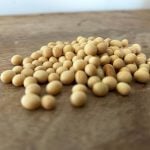
Tag Archives Did you Know

Study says excess phosphorus may reduce crop yields
Results suggest that excess levels can affect soil microbes

Still swimming after 50 years on ice
Ram sperm frozen in 1968 successfully used to impregnate 34 ewes

Biocontrols often also invasive
They seem to be being unintentionally introduced the same way their prey is

Fungi fight plants
These symbiotes are also sometimes screens when it comes to establishing plant ranges

Colder cold snaps under climate change?
The downside of climate change could have a bigger-than-expected effect on nature

A very small number of crops are dominating globally
This concentration is coming as farms become larger and more industrial everywhere

Harvesting wild genes boosts resistance
A new method promises to make finding and using these genes much easier and faster

Prairie strips pack big benefit
Carefully siting natural habitat on a farm can more than offset the small losses from setting land aside

Responsible innovation key to ‘smart farming’
Researchers urge counting all the benefits and costs of new technology

New barley polysaccharide identified
A new barley compound could have a myriad of uses and even agronomic benefits


